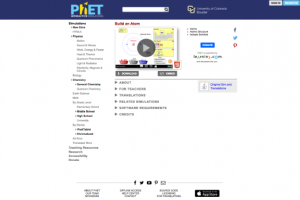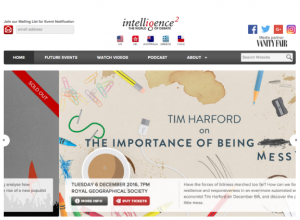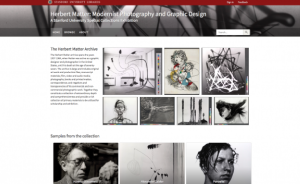Research and Education
Back to Top
|
 |
|
The Civil War in Art
|
Social studies |
|
The Terra Foundation for American Art, in collaboration with a number of partners, has created this collection of interactive exhibits and classroom resources dedicated to artistic portrayals of the American Civil War. Featuring a total of 128 images, including portraits, photographs of sculptures, newspaper illustrations, and paintings, this website highlights how artists have depicted various aspects of the war, from slavery to famous battles to the homefront. Each image is accompanied by information about the work and its artists, questions for consideration or discussion, and suggestions for further readings. Visitors can browse these works chronologically in the Image Gallery or through a series of themed Exhibits, such as Lincoln, Emancipation and the Meaning of Freedom, and Remembering the Civil War. Featured works include Samuel J. Miller's mid-nineteenth century daguerreotype of Frederick Douglass; Winslow Homer's 1864 On Guard; and Shirley Firestone's 1864 Harriet Tubman. Instructors can check out detailed lesson plans and classroom activities that utilize this remarkable collection in Classroom Projects. [MMB] |
|





|
|
 |
|
TED-Ed: Mathematics Lessons
|
Mathematics |
|
As mathematics instructors know, powerful visuals and engaging problems are key to teaching students new numeracy skills and concepts. TED-Ed, the youth and education initiative tied to the popular lecture series, is home to a number of short videos related to mathematics. Created by a team of educators, content experts (including TED speakers), animators, and video directors, this collection includes short, instructional films about key math vocabulary and concepts as well as a series of mathematical riddles (these would make strong classroom warm-up or team building activities). Instructors can search for videos by category (Algebra, Geometry, and Number Operations) or browse for materials by Student Level. One recent instruction short, for example, helps students understand the concept of a vector. Another explains "why the metric system matters." Each video is accompanied by a series of multiple choice quizzes (in the Think section) and information about related concepts and resources (in the Dig Deeper section). [MMB] |
|





|
|
 |
|
Institute of International Education: Open Doors Data
|
Social studies |
|
The Institute of International Education publishes Open Doors Data, an information resource about international students who study at U.S. colleges and universities and U.S. students who study abroad. This data may be of interest to higher education professionals as well as policy makers. On this website, visitors can check out a number of data tables and press releases about the Open Doors 2016. These resources accompany the organization's annual report which is also available for purchase on the website. Published since 1954, all data from this report is obtained by surveying accredited U.S. colleges and universities. One highlight is a series of infographics that highlight key findings from the institute's research. Visitors can also search for data of interest via a number of categories, including Fast Facts, Economic Impact, Intensive English Programs, Community Colleges, and Fact Sheets by U.S. State, County, and Region. [MMB] |
|





|
|
 |
|
Medical Heritage Library
|
Health |
|
The Medical Heritage Library is a "digital curation collaborative" between numerous leading medical libraries, including the August C. Long Health Science Library at Columbia University, the College of Physicians of Philadelphia, and the Wellcome Library, to name just a few. These libraries are working together on this remarkable collection that provides insight into the history of medicine in the United States and Great Britain. Through the website's Content tab, visitors can browse hundreds of medical journals, pamphlets, and books dating back to the sixteenth century. Researchers can also conduct a keyword Search in order to find relevant material within this extensive (and still growing) collection. Educators or the more casually interested visitors may want to simply start with the homepage, which highlights a variety of material from this collection as well as current exhibits and projects at participating libraries. For example, in the most recent blog post (as of this writing), readers can hear from Hanna Clutterbuck-Cook as she discusses seventeenth century blood transfusions. [MMB] |
|





|
|
 |
|
PhET Interactive: Build an Atom
|
Science |
|
From the University of Colorado's PhET (Physics Education Technology) Interactive Simulation series comes Build An Atom, a collection of interactive tools that helps students understand the structure and properties of different elements. In the main interactive, Build an Atom, students can add neutrons, protons, and electrons to an atom to explore how manipulating each of these components will, in turn, impact the atom's element identity, mass number, net charge, and stability. In addition, students can play a series of games to test their ability to correctly label atoms based on their particle make-up, or to correctly diagram atoms based on the element symbol, atomic number, and charge. By creating an account, teachers can access additional tips and resources for using this interactive tool. [MMB] |
|





|
|
 |
|
Colonial North American Project
|
Social studies |
|
From the Harvard Library comes the Colonial North American Project, a remarkable collection of digitized letters, books, official documents, sermons, sheet music, and other archival materials from the seventeenth and eighteenth centuries. As the site notes, "these documents reveal a great deal about topics such as social life, education, trade, finance, politics, revolution, war, women, Native American life, slavery, science, medicine, and religion." At this time, highlights from the collection include an original manuscript of plays and poems by Mercy Otis Warren; a number of letters and public addresses penned by Harvard President, John Thornton Kirkland; and handwritten sermons by Cotton Mather. These items can currently be browsed by Date, Title, or document Creator. The Colonial North American Project also features five Essays that provide additional insight into select documents. For example, "Politics in the Early American Republic" describes the role that newspaper editor John Dennie played in promoting the early American republic. Readers can then peruse a number of letters written to Dennie during the late eighteenth century. [MMB] |
|





|
|
 |
|
Reading Apprenticeship at WestEd: Downloadable Resources
|
Language Arts |
|
Reading Apprenticeship is a method of teaching literacy that centers on supporting student metacognition - or the ability to strategically think and reflect on their own learning. Developed over the course of three decades by a team of educators at the educational nonprofit WestEd, Reading Apprenticeship centers on a series of practices and strategies that can be used to support literacy development in the K-12, higher education, and adult education contexts. On this page, instructors can download a number of free resources related to this method, including an extensive overview of the philosophy and practices behind the approach and a number of graphic organizers to use in the classroom. The graphic organizers are designed to help students reflect on their own reading (e.g. to make predictions, identify areas of confusion, and name appropriate strategies, etc.) and can be easily incorporated into any English or literacy classroom. The resources available here, free of charge, come from the 2012 book Reading for Understanding by Ruth Schoenbach, Cynthia Greenleaf, and Lynn Murphey. [MMB] |
|





|
|
 |
|
Water, Megacities, and Global Change (PDF)
|
Science |
|
The United Nations defines cities with populations of 10 million or more as megacities. Many of these megacities are rapidly expanding and require natural resources to sustain their growing populations and industries; many are also home to economic disparities. With these factors in mind, how are megacities distributing safe drinking water and sanitation and how is global climate change impacting water availability in these cities? In December 2015, UNESCO hosted a conference entitled "Water, Megacities, and Global Change" to address these and other questions. In this accompanying report, readers can learn about how fifteen cities - including Beijing, Chicago, Lagos, and Paris - are currently addressing water-related issues. In doing so, the report highlights both the unique challenges faced by these cities along with possible common solutions. [MMB] |
|





|
|
























